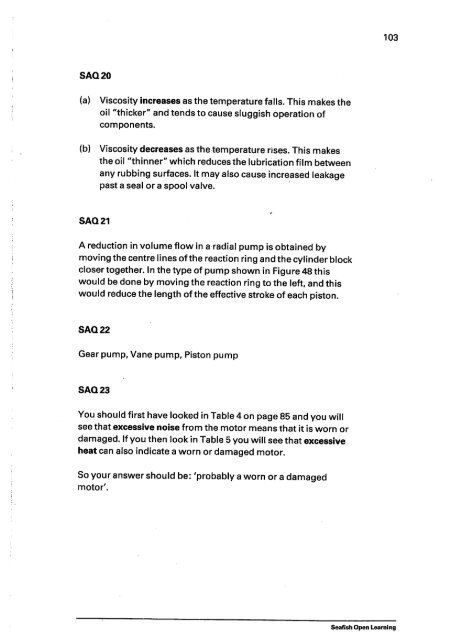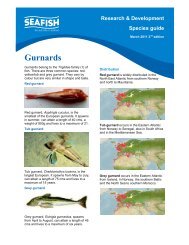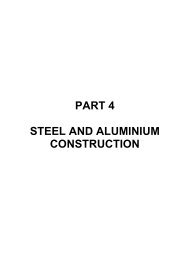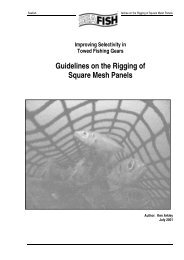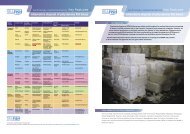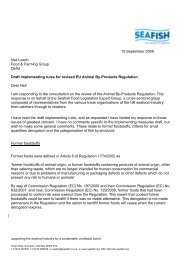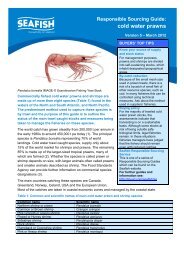Hydraulics - Seafish
Hydraulics - Seafish
Hydraulics - Seafish
You also want an ePaper? Increase the reach of your titles
YUMPU automatically turns print PDFs into web optimized ePapers that Google loves.
103<br />
SAQ20<br />
(a)<br />
Viscosity increases as the temperature falls. This makes the<br />
oil "thicker" and tends to cause sluggish operation of<br />
components.<br />
(b)<br />
Viscosity decreases as the temperature rises. This makes<br />
the oil "thinner" which(reduces the lubrication film between<br />
any rubbing surfaces. It may also cause increased leakage<br />
past a seal or a spool valve.<br />
SAQ21<br />
A reduction in volume flow in a radial pump is obtained by<br />
moving the centre lines of the reaction ring and the cylinder block<br />
closer together. In the type of pump shown in Figure 48 this<br />
would be done by moving the reaction ring to the left, and this<br />
would reduce the length of the effective stroke of each piston.<br />
SAQ22<br />
Gear pumpf Vane pump, Piston pump<br />
SAQ23<br />
You should first have looked in Table 4 on page 85 and you will<br />
see that excessive noise from the motor means that it is worn or<br />
damaged. If you then look in Table 5 you will see that excessive<br />
heat can also indicate a worn or damaged motor.<br />
So your answer should be: 'probably a worn or a damaged<br />
motor'.<br />
<strong>Seafish</strong> Open Learning


